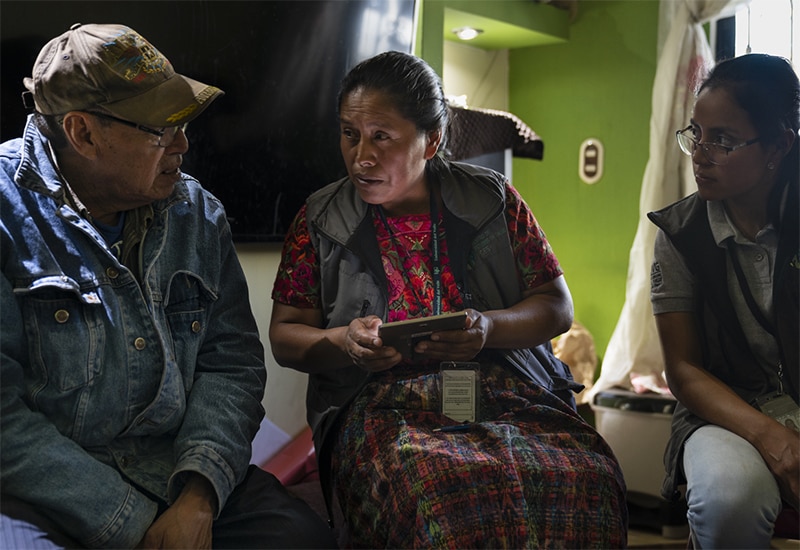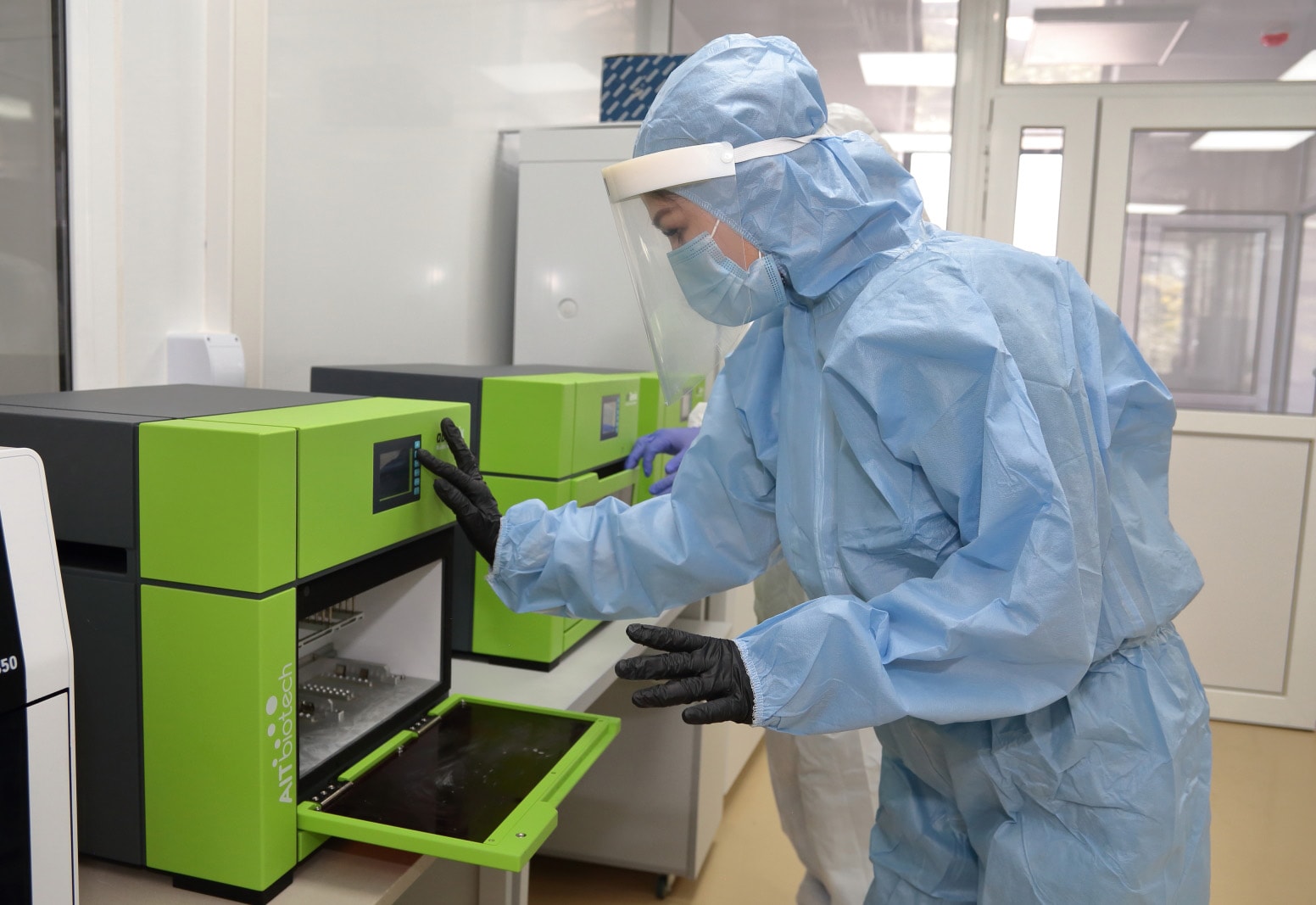CDC’s Global Health Equity Strategy
As the nation’s leading public health agency – and the only U.S. government agency with global reach and an exclusive focus on public health – CDC is uniquely positioned to lead many critical aspects of the U.S. government’s effort to address the world’s leading health challenges. CDC envisions a world where everyone can achieve the highest attainable level of health. This vision of global health equity is integral to CDC’s focus on serving the public through timely action and impact.
In 2022, CDC launched an agency-wide strategy that aims to integrate health equity into everything we do. As outlined in the strategy, CDC is committed to cultivating comprehensive health equity science, optimizing interventions, reinforcing and expanding robust partnerships, and enhancing capacity and workforce engagement (also known as CORE). This commitment ensures that health equity and the elimination of health inequities remain central to CDC’s work and holistically transforms the agency’s approach to public health.
Building on the CORE strategy, CDC developed the Global Health Equity Strategy to consistently and deliberately advance health equity principles and approaches within and throughout CDC’s global science, interventions, partnerships, policies, and infrastructure.

Field researchers from Universidad del Valle de Guatemala (UVG) conduct a household interview for a survey to better understand antimicrobial resistance. Credit: Nick Tenorio, CDC

Laboratory technicians at the National Reference Laboratory for the Service for Sanitary and Epidemiological Wellbeing and Public Health (SSEWP) in Tashkent, Uzbekistan test samples for COVID-19 and other infectious diseases. Credit: Sharakhmedov Hamdam, Golden Ministries
CDC’s global health equity efforts are integrated throughout our global portfolio, including:
- Public Health Preparedness: Integrating health equity into essential public health functions, increasing representation in the workforce, and advancing pandemic preparedness to prepare, detect, and respond to public health threats more comprehensively.
- HIV and TB: Reducing health inequities among people living with HIV and TB by promoting policies, closing prevention and treatment gaps, eliminating systematic data and health infrastructure challenges, and enhancing programming in CDC-supported countries to reduce or eliminate stigma and discrimination among priority populations.
- Immunization: Implementing a health equity approach to identify and reach underserved populations with immunity gaps that supports measurable reductions in morbidity and mortality from targeted vaccine-preventable diseases.
- Annual influenza epidemics disproportionately impact vulnerable populations in tropical low- and middle-income countries (LMICs). To reduce health inequities among people in LMICs, CDC collects data from a dozen countries to build the evidence base on risk factors that place subpopulations at higher risk of adverse outcomes from acute respiratory illnesses – like influenza. Data is then shared with local health authorities to decrease disparities in health promotion by using data-driven strategies to tailor risk communication messages encouraging influenza vaccination.
- Parasitic Diseases: Improving availability and access to disease prevention and treatment services in places at high-risk for parasitic diseases worldwide with a focus on neglected tropical diseases and malaria.
- Data Modernization: Partnering with government agencies and public health organizations to review and update data collection processes to address groups that have been historically under-represented in statistical data and to include new data elements, like injury and violence data.
- Infectious Diseases: Identifying research gaps and opportunities to improve health outcomes and reduce the risk of infectious diseases among historically marginalized populations.
- Laboratories: Ensuring all countries have access to high quality laboratories by building global laboratory capacity to support surveillance for VPDs and rapid detection.
Global Health Equity in Action
Influenza vaccination programs reduce annual disease burden and enhance pandemic vaccine readiness. The Partnership for Influenza Vaccine Introduction (PIVI) is a CDC-supported public-private partnership to support the expansion and sustainability of influenza vaccination in low- and middle-income countries. PIVI partners leveraged the skills and public health programs built or strengthened by influenza vaccination programs to equitably support planning, implementation, and evaluation of COVID-19 vaccinations. PIVI provided financial support for COVID-19 vaccination programs in 35 countries, including many with limited or no experience in conducting vaccination campaigns targeted at adult populations. Seasonal influenza programs continue to be important components to vaccinate all communities efficiently and equitably.
CDC collaborated with interagency and implementing partners to optimize HIV and TB molecular diagnostic networks in countries supported by the U.S. President’s Emergency Plan for AIDS Relief (PEPFAR). Through geospatial laboratory and clinic mapping, modeling, and quality improvement exercises, testing infrastructure and equipment, human resources, and specimen types were adjusted. This led to improved patient access to HIV and TB molecular laboratory testing and decreased time from sample collection to availability of results for clinical action.
The World Health Organization Regional Office for Europe, CDC, implementing partners, and bilateral country partners from Ukraine, Georgia, Kyrgyzstan, Uzbekistan, and Kazakhstan designed a regional training program called Informatics and Data Science for Health aimed to create and use public health information systems that enable the capture, management, analysis, dissemination, and use of reliable, timely information to improve population-level health. The first cohort of the innovative 12-month certificate-based fellowship training will begin in April 2023.
CDC organized the global distribution of over 3,091 kits of the Influenza SARS-CoV-2 (Flu SC2) multiplex assay to 163 laboratories in 142 countries, corresponding to over 1,545,500 tests since October 1, 2020. Many of these kits supported National Influenza Centers in partner low- and middle-income countries to conduct more tests in less time while optimizing the use of important testing materials and facilitating uninterrupted surveillance for both influenza and SARS-CoV-2.
To ensure artemisinin-based combination therapies (ACTs) (the World Health Organization’s recommended first-line treatment for uncomplicated malaria) retain their efficacy, CDC and the U.S. President’s Malaria (PMI) have collaborated with African malaria researchers and national malaria control programs since 2015 to monitor drug resistance in Africa. CDC established the PMI-supported Antimalarial Resistance Monitoring in Africa (PARMA) network so malaria experts in the United States and across Africa can work together to quickly identify emerging resistance and adapt treatment practices. In 2022, the CDC Foundation and Bill & Melinda Gates Foundation supported a PMI initiative to equip a lab in Senegal to offer the same trainings and services as CDC’s Malaria Lab.